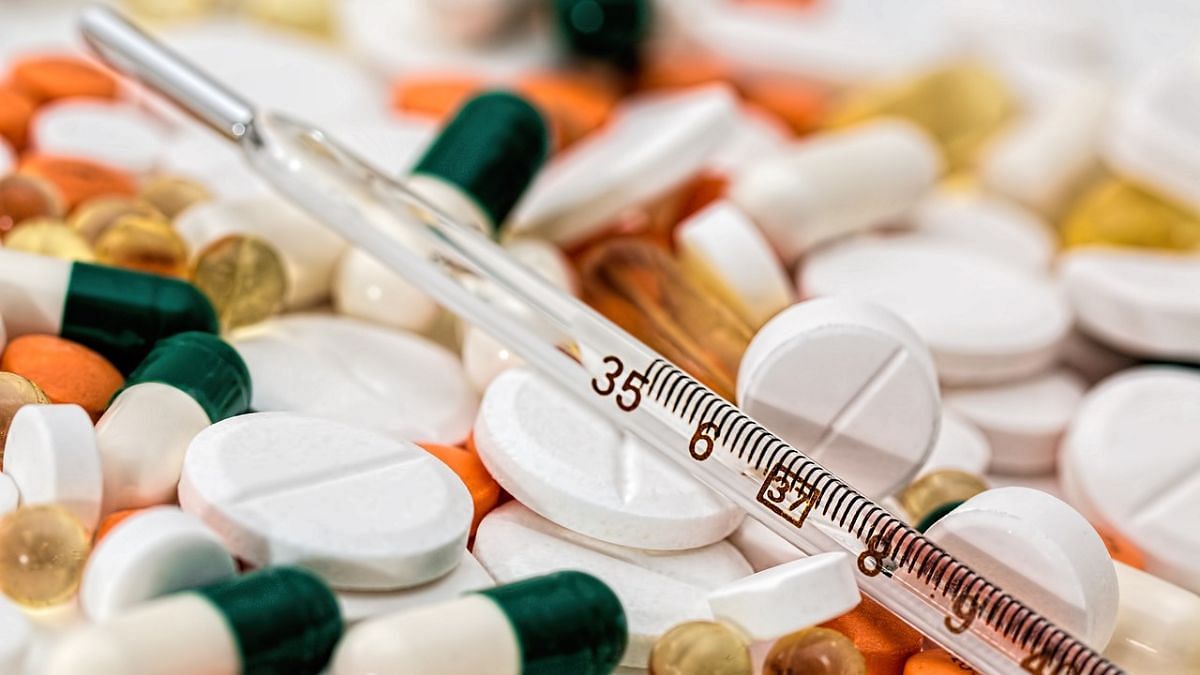New Delhi: India’s drug regulator, Central Drugs Standard Control Organisation (CDSCO) is considering a proposal to treat all antibiotics as “new drugs” and, thereby, making centralised approval mandatory for launching any drug in this category, ThePrint has learnt.
The move comes amid growing concern over antimicrobial resistance (AMR) globally. In India, AMR has emerged as a massive public health challenge and a mega killer due to the rise of drug-resistant pathogens. Bacterial AMR, a condition in which pathogenic bacteria no longer respond to antibiotics, killed between 3 lakh and 10.4 lakh people in India, according to a report published last month in The Lancet.
Last month, the Drug Technical Advisory Board (DTAB), a panel under the CDSCO, discussed the proposal on classifying all antibiotics as “new drugs” under the New Drug and Clinical Trial (NDCT) rules, 2019. ThePrint has seen the minutes of the DTAB meeting.
“If the proposal comes through, it will mean that even the generic antibiotics and the drugs and formulations already granted marketing approval by the regulator (CDSCO) will have to get permission from it (CDSCO) for manufacturing the drug in the country,” a senior CDSCO official told ThePrint. “This will ensure that CDSCO can keep track of all antibiotics in India and maintain their database.”
Under NDCT, 2019, the CDSCO grants manufacturing and marketing licenses to medicines classified as “new drugs” containing new molecules that have not been introduced in the country before or new dosage strength and formulations of molecules already permitted.
However, for generic versions of these medicines, drugmakers need not apply to the CDSCO and can get manufacturing licenses from the state drug administration before starting production.
The DTAB, however, noted at its meeting that multiple high-level forums, ranging from the United Nations General Assembly and G7 to G20, have highlighted AMR as a global health priority. Considering this, the panel proposed to include all antibiotics in the definition of “new drugs’’.
Some AMR experts underlined that the proposed move would likely help establish uniformity in the approval process of existing antibiotics in India.
“The CDSCO’s proposed initiative to mandate centralised permission for the launch of all antibiotics in India represents a significant step towards enhancing public health safety and ensuring the responsible use of these critical medications,” Dr Prabhu Vinayagam, medical advisor, Orchid AMS, a division of Chennai-based Orchid Pharma, which specialises in antibiotics, told ThePrint.
Also Read: Govt approves 50% price rise for 8 essential drugs after manufacturers say production is ‘unviable’
Growing AMR menace
The annual report by the Indian Council of Medical Research (ICMR)’s Antimicrobial Resistance Research and Surveillance Network (IAMRSN) — released in September this year — revealed the alarming presence of superbugs in 21 of the country’s leading hospitals between 2017 and 2023. Superbugs are pathogens resistant to multiple antibiotics and are extremely difficult to treat.
Equally worrying is the fact that widespread inappropriate human use of antibiotics is a significant driver of antibiotic resistance in India, the largest antibiotic consumer in absolute volume.
Previous analyses of the antibiotics sales data also indicate that the usage of the newer classes of existing antibiotics — mostly the last-resort or the Reserve group antibiotics — is disproportionately high.
The World Health Organisation (WHO) separates antibiotics into three groups, termed Access, Watch, and Reserve. The Access group includes narrow-spectrum antibiotics, recommended as first-line or second-line antibiotics. The Watch group includes broad-spectrum antibiotics with a high chance of users developing resistance and which are to be used only for specific indications. Antibiotics, which are to be used only as a last resort, fall in the Reserve group.
“Given the background of antibiotic usage patterns in the country, a centralised approval process allows for better monitoring and control of antibiotic distribution, encouraging prudent use and supporting stewardship programmes to preserve the effectiveness of existing antibiotics,” said Vinayagam.
Implications for combinations of antibiotics
The largely unrestricted and over-the-counter sales of most antibiotics, the manufacturing and marketing of many fixed-dose combinations (FDC) drugs with more than one active ingredient in specific proportions, and the overlap in regulatory powers between national and state-level agencies have influenced the availability, sales, and consumption of antibiotics in India.
An analysis of antibiotics sold in India — published last year — showed that government initiatives to remove centrally unapproved and banned antibiotic FDC drugs remain largely ineffective. In 2020, most antibiotic formulations — over 70 percent — sold in India were unapproved or banned.
The analysis revealed that as a proportion of total antibiotic sales, the sale of FDCs increased to 37.3 percent in 2020 from 32.9 percent in 2008, even though, during that period, the total number of antibiotic FDC formulations in the market fell from 574 to 395.
“It’s a reality that several irrational and unscientific antibiotics remain available in the market and are exacerbating the problem of AMR. The CDSCO move may address this problem largely,” said Dr Aravind R, the head of the department of infectious diseases at Government Medical College in Thiruvananthapuram.
Vinayagam, too, said the centralised approach may tackle the issue of irrational use of antibiotics in the country.
“Additionally, the step promises to enhance post-marketing surveillance and pharmacovigilance, allowing for quicker identification and response to adverse drug reactions or safety concerns, thus safeguarding public health,” he said.
According to Vinayagam, streamlining the approval process could also encourage pharmaceutical companies to invest in research and development of new antibiotics.
(Edited by Madhurita Goswami)
Also Read: NABH to fix deadline for full accreditation, but not all hospitals keen despite perks

